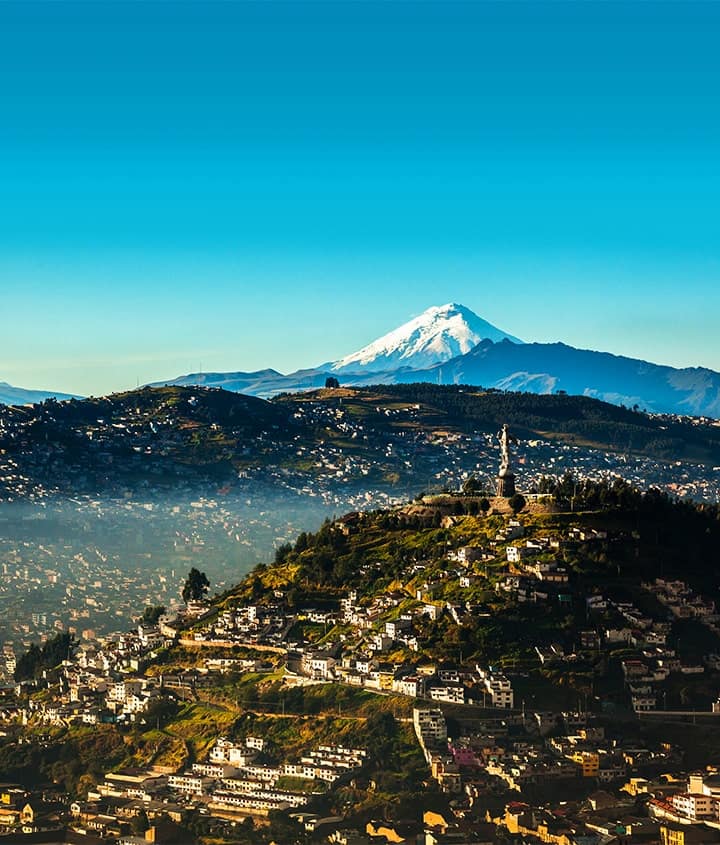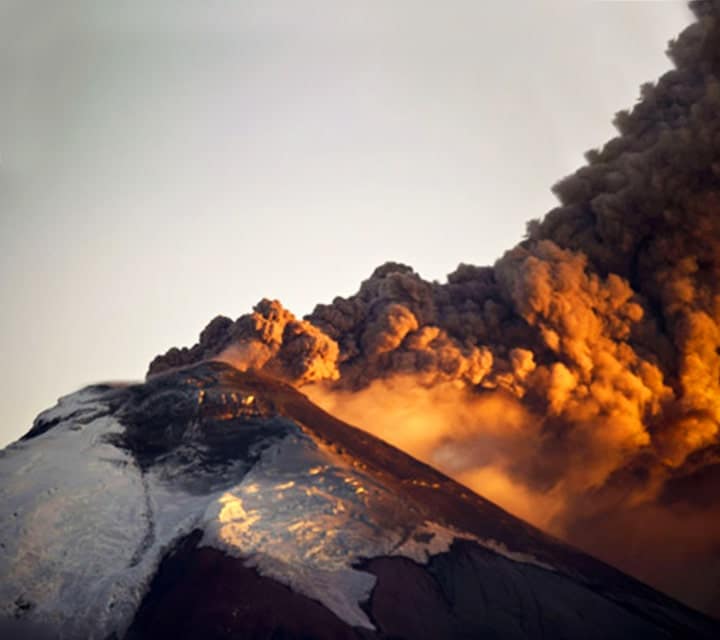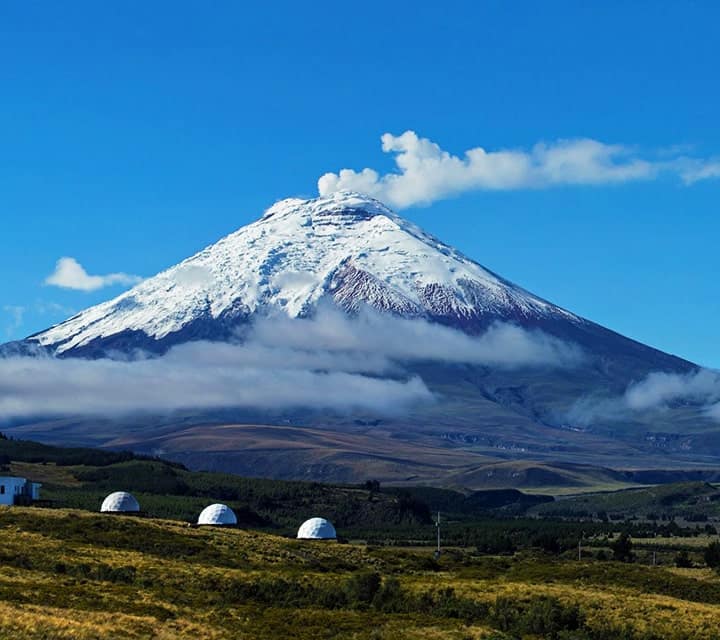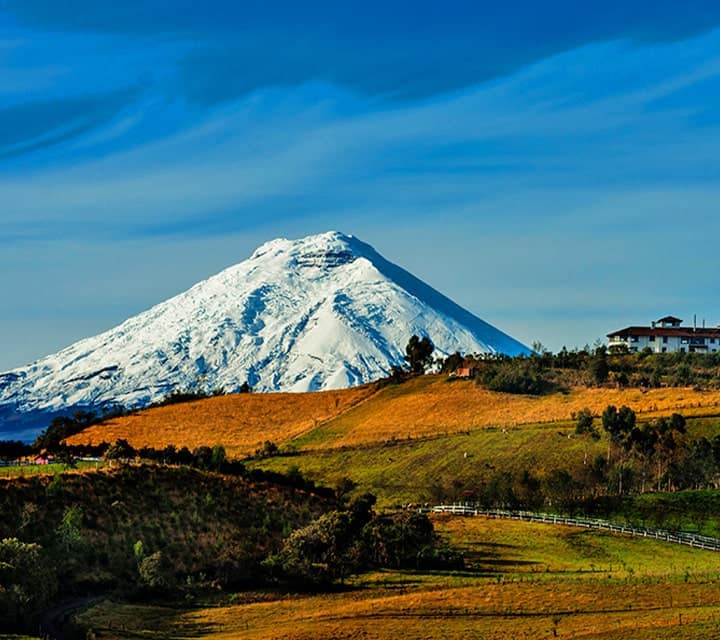
Cotopaxi, the highest Ecuadorian volcano, began erupting for the first time in over 70 years, on Friday, August 14th, with a series of blasts that sent ash 8,000 meters above its crater. Though no new significant eruptions have occurred to date at the time of this writing, the volcano remains active and continues to emit ash. Sources cannot say how long this will continue for or if there will be another significant event.
Regardless of What Takes Place with Cotopaxi, Our Aim Is To:
- Provide information on matters of personal safety.
- Take steps that minimize disruption and inconvenience to the travel plans of our passengers.
- Inform passengers of their options and choices related to the above.
Passengers Flying Into and / or Out of Guayaquil:
Passengers flying into / or out of Guayaquil should expect little or no disruption to their travel plans. Guayaquil is roughly 130 miles as the crow flies to the southwest of Cotopaxi. There are a number of large mountains and ranges between these places and prevailing winds blow northward from Guayaquil.

Personal Safety for Travelers:
So far as passengers traveling with Quasar is concerned, be assured that your personal safety is not in jeopardy as a result of Cotopaxi. The most likely concern you may face is disruption of your travel plans, which we address below. The reasons we say that your safety is not threatened include:

- Flight Safety: If a major eruption creating large amounts of ash were to occur, Quito airport will close. Both international and domestic flights into Quito airport will either be diverted (typically to Guayaquil), or cancelled prior to departure. Flights out of Quito will be cancelled. The point is that you will either be safely diverted or not fly.
- Quito: Quito is not threatened by the volcano other than by falling ash. Even during the major eruption of 1877 Quito was not threatened.
- Exclusion Zone: The biggest threat posed by the volcano would be from fast-moving mud and rock flows caused by melting glaciers. The Ecuadorian government has closed Cotopaxi National Park and has moved residents from threatened areas south of Quito. You can be certain Quasar will not operate tours in this region.
Mariscal Sucre International Airport, Quito:
Quito's new airport, and there is only one, is north of the city. Cotopaxi is to the south of Quito. The airport maintains a website where one can view arrival and departure status right on the home page. Just go to: Mariscal Sucre International Airport.
The airport was closed briefly when the Cotopaxi first erupted in August. KLM cancelled its flight to Amsterdam. As far as we know this was the only international flight cancellation to date.
Passengers Flying Into and / or Out of Quito: Passengers who face the greatest potential disruption to travel plans, should Cotopaxi experience further eruptions, are passengers who have planned to fly in and out of Quito. In this case one can expect airport closures due to ash. This is regrettable as Quito and the Central Andes have so much to offer. Following are disruptions one might face:
If Quito airport is closed:
- Your international carrier may decide to cancel your international flight to Quito - In this case you may miss your connection to the Galapagos flight and miss your cruise (worst case).
- Our domestic flight will not be able to fly from Quito to the Galapagos - If you are already in Quito this will likely mean that Quasar will drive you to Guayaquil to catch a Galapagos flight from there. The drive takes roughly 7 to 8 hours. Your will likely experience an abbreviated cruise as a result.
- Your carrier may cancel your flight back home from Quito. - This could result in your being stuck in Quito for some time, or finding whatever routing the airline can provide to get you home. While Quasar will try to assist you, this is sure to be frustrating (be sure to bring the contact information for your air ticketing company).
- Flights to and from the Amazon (which typically operate from Quito) will be grounded. We are talking to the Amazon lodges to see what their contingencies are. The road from the northern part of Quito to Coca, where passengers board launches at the Napo River to take them to the lodges, takes about 4 1/2 hours to drive. Remember that you would have to get to Quito first. In short, expect delays.
Quasar Protocols:
Quasar has specific protocols in place to deal with a more significant eruption. We even work with our hotels and service suppliers to insure they have extra food and water on hand should things come to a standstill for a few days or if communications and electricity goes out. Our procedures are aimed at insuring your travels go as smoothly as possible in the face of potential disruptions.

Suggestions & Additional Contingencies for Passengers Flying Into or Out of Quito
Based on the above, we recommend that until the status of Cotopaxi is better understood and the volcano returns to a less active state that passengers fly in and out of Guayaquil, if they wish to avoid the possibility of the inconveniences mentioned. If you already have flights into Quito, Quasar will do its best to insure things go smoothly, but one must recognize that there could be significant disruptions. A major dose of patience may be required.
Travel Insurance
As always we strongly recommend that passengers obtain a good trip cancellation / interrupt policy that covers changes in travel plans. Policies vary according to state and the type of policy one purchases, but a good policy will actually cover cancellations and interruptions due to volcanic activity (recently verified with Travel Guard).
Cotopaxi
Ecuador is famous for its Avenues of the Volcanoes. Living on, around and even in (!) volcanoes is a daily part of life along the equator; as is moving out of the way when necessary. Volcanoes are woven into the fabric of Ecuador and contribute to making it such an attractive country. That is not to understate the power of a volcano like Cotopaxi, but to put things into perspective.

